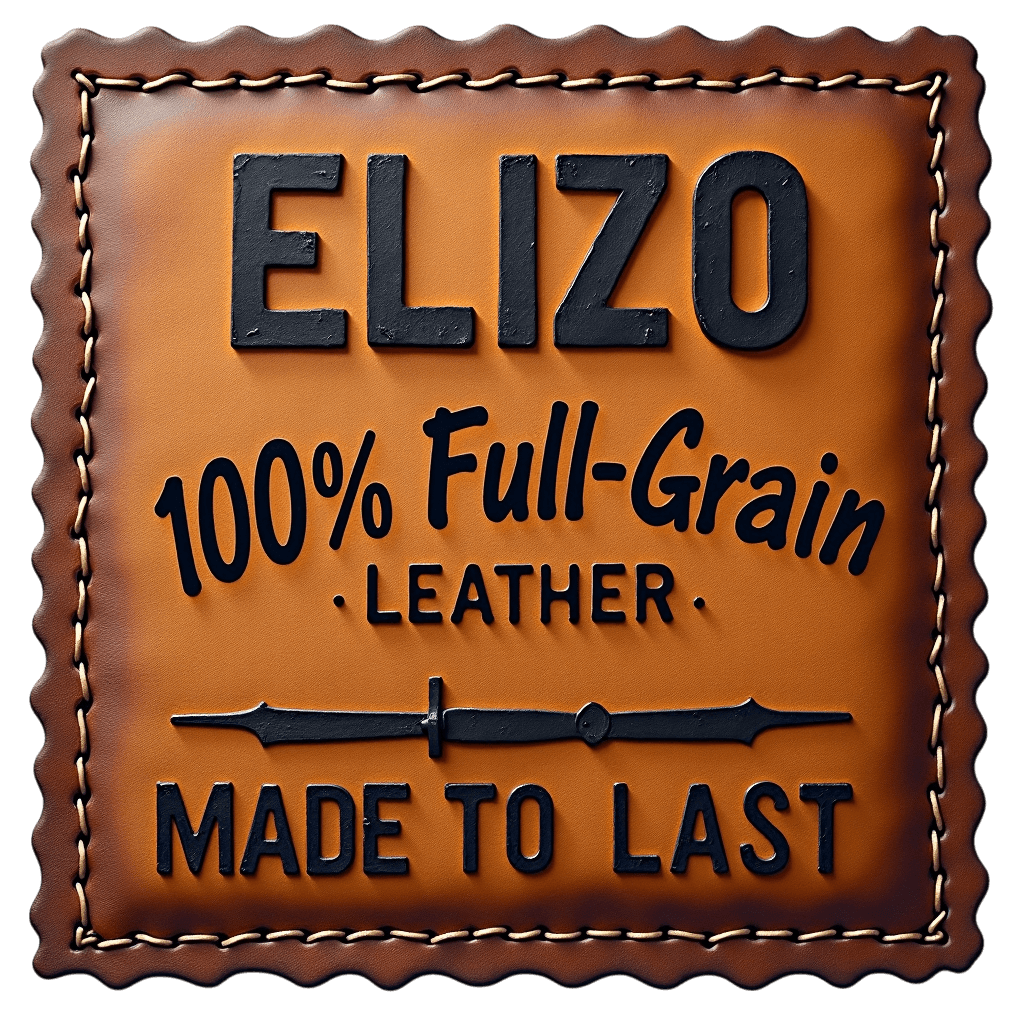How Long Does A Leather Last?
Of all the natural textiles out there, nothing beats leather in durability. Leather is prized for its resistance to wear and tear as it ages beautifully with a unique grain and smooth texture.
In this article, we'll look into the longevity of leather: how long a type of leather lasts and what you can do to make it last longer. We'll also discuss some cleaning and conditioning tips that will help extend the life of your leather couch, shoes, bags, etc.
Durability of Different Leather Types
How long your leather jacket, bag, or sofa lasts depends on the type of leather used to make them. Learn about the durability of different leather types below.
Full Grain Leather
Considered to be the highest quality leather type, full grain leather is made by splitting or separating the whole grain layer of the animal hides or skin. The grain layer contains a dense and compact arrangement of collagen fibers responsible for its strength and durability.
Full grain leather can last for decades, and with proper care and maintenance, even for over 100 years. This type of leather can be pricey, but most people are willing to pay more for a long-lasting product with unmatched quality and natural beauty.
The grain layer isn't altered or corrected to make full grain leather so that this leather type may show minor imperfections like uneven thickness or color. The grain layer is also responsible for full grain leather forming a patina that changes through time, enhancing the leather's texture and color.
Top Grain Leather
Like full grain leather, top grain leather also comes from the grain layer of the animal hide. But top grain leather has a more uniform texture and color because it is sanded and stained to remove imperfections and blemishes.
Top grain leather is uniformly smooth and more flexible and supple than full grain leather. Sanding and staining the grain layer can compromise the durability of top grain leather, but it can still last decades of use.
Top grain leather will also form a natural patina over time, but it may take longer than full grain leather.
Split Leather
Split leather is any type made from what's left of the hide after the grain layer is split off. There are many types of split leather, which are sold under different names, such as genuine leather, corrected leather, suede, embossed leather, coated leather, and many more.
Split leather is sanded, dyed, and embossed to copy the appearance of grain leather. If made with low-quality material, the coating or embossing degrades quickly, and the surface can crack, fade, or peel in no time.
If made right, split leather is durable enough to last for 5 to 7 years. Split leather is also cheaper than grain leather and ideal for making leather furniture because of its less soft and stiffer texture.
Bonded Leather
Bonded leather is made from scraps and pieces of split or grain leather that are bonded together using polyurethane (PU) or latex. Some manufacturers sell bonded leather as genuine leather because it can be made from 10 to 90% real leather.
Bonded leather is the least durable type of real leather and won't last longer than five years. Be that as it may, bonded leather is cheap and still more durable and water-resistant than most fabrics or textiles.
Faux Leather
Faux leather is also called synthetic or fake leather and can be made from PU or similar plastic material. Faux leathers are made to look and feel like real leather, but they are not as durable and can only last a few years.
Fake leather is made from 100% synthetic material and is highly waterproof and sunlight resistant. It is perfect for leather furniture constantly exposed to the elements, like a leather car seat, outdoor leather sofa, or leather couch.
Although it may not look as classy as real grain leather, fake leather can give you more choices with a wide range of colorful variants and trendy designs. And being made from non-animal materials, fake leather is vegan and easier to clean or maintain.
Factors That Affect Leather Durability
Leather is inherently durable, but how long leather last is also a question of many factors. Read about these factors below.
Leather Tanning
Leather quality starts with high-quality animal hide but doesn't end there. The process used in tanning a piece of animal hide or skin also affects the final leather quality and longevity.
Among the tanning methods, vegetable tanning or the use of plant tannins is the best method to produce high-quality leather. Vegetable tanning preserves and strengthens the animal hide or skin fibers while making them softer and more flexible.
Finishing & Design
The quality and durability of the final leather product also depend on the finishing employed and design used by the product manufacturer. The finishing steps are responsible for the final leather product's elasticity, softness, and texture.
The leather maker can also use designs that enhance and reinforce the leather structure for a more durable leather product. Design elements such as stitching, straps, handles, linings, etc., can be used to increase durability and longevity.
Use & Storage
How a leather item is used or stored also affects how long it lasts. Using your leather sofa or leather jackets constantly and carelessly makes them more prone to wear and tear.
Exposing leather products to the elements and not storing them properly affects their durability and lessens their lifespan. Extreme heat, moisture, dust, and harsh chemicals destroy the leather surface's natural protection, making it more prone to damage.
Care & Conditioning
Proper care and conditioning are essential in maintaining the natural protective layer of your leather items. No matter how expensive and high-quality your leather items are, they will not last if you don't maintain and support their natural look and durable characteristics. Keep reading to learn tips on properly caring for and conditioning your leather items.
Care & Conditioning Tips
-
Keep Water Away
All leather types generally have excellent water resistance, but constant and prolonged exposure to moisture will ultimately damage leather fibers. Water also promotes the growth of bacteria and molds that further wreak havoc on your beloved leather sofas or bag.
Keep moisture away by wiping and air-drying your items if they get wet. You must also store your items in breathable storage bags to prevent water vapor from forming water droplets that will seep into your leather items. For large items like leather sofas and similar furniture, you can wipe them with a dry absorbent cloth. -
Clean Regularly
Cleaning your leather items removes the dust, dirt, and grime that build up on the leather surface as water from the air and oils from your hands dissolve them. This dirty film of oil and water on the surface of the leather then seeps into the leather fibers and eventually destroys and weakens the leather coating and grain structure.
Use a damp cloth soaked in mild soapy water to wipe down any dirt or debris on the leather surface. Rinse with a clean damp cloth until soap is removed. Dry immediately with a dry absorbent cloth to prevent leather from absorbing water into its fibers. -
Apply Conditioner
A leather conditioner is any natural oil or moisturizer you need to apply on the leather surface to replenish the natural oils removed from cleaning or constant use. Conditioning helps maintain a soft, shiny, and bright-colored surface for all leather types. A leather conditioner also promotes the formation of a shiny and beautiful patina on grain leathers.
Apply conditioner or oil according to product recommendations of use. Leather conditioning should be done weekly or monthly, depending on the type of conditioner and type of leather.
Leather Lasts A Lifetime
Your leather items can last a lifetime, but only if you choose the right type and do your part in taking care of them.
Want to own long-lasting leather products? Check out our affordable, high-quality full grain leather here.
Questions? Suggestions? Let us know! Please feel free to leave your comments below.



